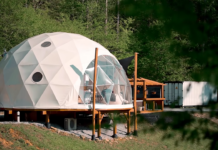
You certainly had a fantastic idea once. You know, the kind of idea that keeps you up at night, buzzing with excitement? Well, if you’re nodding your head right now, it’s time to take that idea and turn it into a reality. But before you do, there’s one crucial step you can’t afford to skip: protecting your invention with a patent.
We are going to walk you through a comprehensive roadmap that will guide you from the initial spark of inspiration all the way to securing legal protection for your invention. We’ll break down the complex patent process into simple, actionable steps, giving you the confidence and knowledge to navigate this exciting journey.
1. Understanding Your Invention

Before diving into the patent process, let’s take a moment to understand your invention better. Take a pen and paper, and start by defining your creation and its key features. What problem does it solve? How is it different from existing solutions? By clearly articulating these aspects, you’ll have a solid foundation for the next steps.
Now, let’s ensure your invention is truly unique. Conducting a preliminary patent search will help you determine if your idea has already been protected. You can use online patent databases and search engines to check for similar inventions. Don’t worry if you find something akin; it doesn’t necessarily mean your idea is off the table. Use this opportunity to refine and differentiate your invention further.
2. Identifying the Patent Type
Next, let’s talk about the different types of patents. We have utility, design, and even plant patents. It’s like choosing between different flavors of ice cream—each has its own unique characteristics and requirements. So, which one suits your invention best?
If your creation is a new and useful process, machine, or composition of matter, a utility patent is what you’re looking for. On the other hand, if your invention is all about the ornamental design of an object, a design patent is the way to go. And if you’ve discovered or developed a new variety of plants, then a plant patent is your ticket to protection. We know that identifying the right type can be hard sometimes, so for any additional info you can turn to professionals and wait for their help.
3. Conducting a Thorough Patent Search

Now, it’s time to dig deeper. We need to conduct a comprehensive patent search. This step is like exploring uncharted territory to ensure your invention is truly unique. You wouldn’t want to set sail only to discover someone else has already claimed the treasure, would you?
Use online databases, search engines, and enlist the help of an attorney or agent for professional guidance. Their expertise can save you time and help you analyze the search results effectively. Remember, this isn’t a solo adventure—you have a whole team of experts supporting you along the way.
4. Preparing and Filing an Application
Congratulations! You’ve made it this far, and it’s time to put pen to paper—or fingers to keyboard—and draft your patent application. Before you jump in, you have a choice to make: provisional or non-provisional patent application?
Think of a provisional application as a placeholder, giving you a filing date while you work on the full non-provisional application. It’s like staking your claim on the land while you build your dream house. The non-provisional application is the comprehensive document that describes your invention in detail.
Now, let’s break down the components of an application. We have the title, abstract, and background section that sets the stage for your invention. Then, the detailed description and drawings take center stage, providing a clear picture of what you’ve invented. And finally, we have the claims, which define the boundaries of your invention’s protection.
5. Navigating the Patent Examination Process
Once you’ve filed your application, the real adventure begins—the examination process. This is where the patent office thoroughly reviews your application to ensure it meets all the requirements. Brace yourself for office actions and examiner’s objections. They’re like challenges along the way, but don’t worry—we’re prepared for them.
You’ll have the opportunity to respond to the office’s actions and address any objections raised. Think of it as a chance to fine-tune your invention and strengthen your application. If necessary, you can amend the claims and specifications to overcome the objections. Remember, you don’t have to face this journey alone. Lean on the expertise of an attorney to guide you through the examination process.
6. Prosecution and Grant
After successfully navigating the examination process, you’re one step closer to the finish line: prosecution and grant. Sometimes, you might face rejections or objections from the patent office. But remember, obstacles are just detours leading you to a better route.
Respond to those rejections and objections with determination. Present your arguments, amendments, or amendments to overcome the challenges. Don’t give up! With the help of your attorney, you’ll navigate the twists and turns until you finally secure a granted patent.
7. Post-Grant Considerations

Congratulations! You’ve crossed the finish line and achieved your goal. But the journey doesn’t end here. Now, it’s time to ensure the longevity and protection of your granted patent. Think of it as tending to a garden—you need to nurture and safeguard your invention.
Regularly review and update your patent portfolio. Monitor and enforce your patent rights. Explore licensing and commercialization opportunities to maximize the value of your invention. Remember, it is more than just a piece of paper—it’s a valuable asset that can open doors to a world of opportunities.
Conclusion
We’ve traveled together from the initial idea to the granting of a patent. It’s been a thrilling journey filled with challenges and triumphs. The path to patenting your invention may be complex, but armed with the right knowledge and professional guidance, you can turn your idea into a reality.
So, take that leap of faith. Embrace the adventure of transforming your invention into a valuable patent. Connect with an attorney, gather your thoughts, and let’s embark on this incredible journey together. Your groundbreaking idea deserves the protection it needs to thrive.



